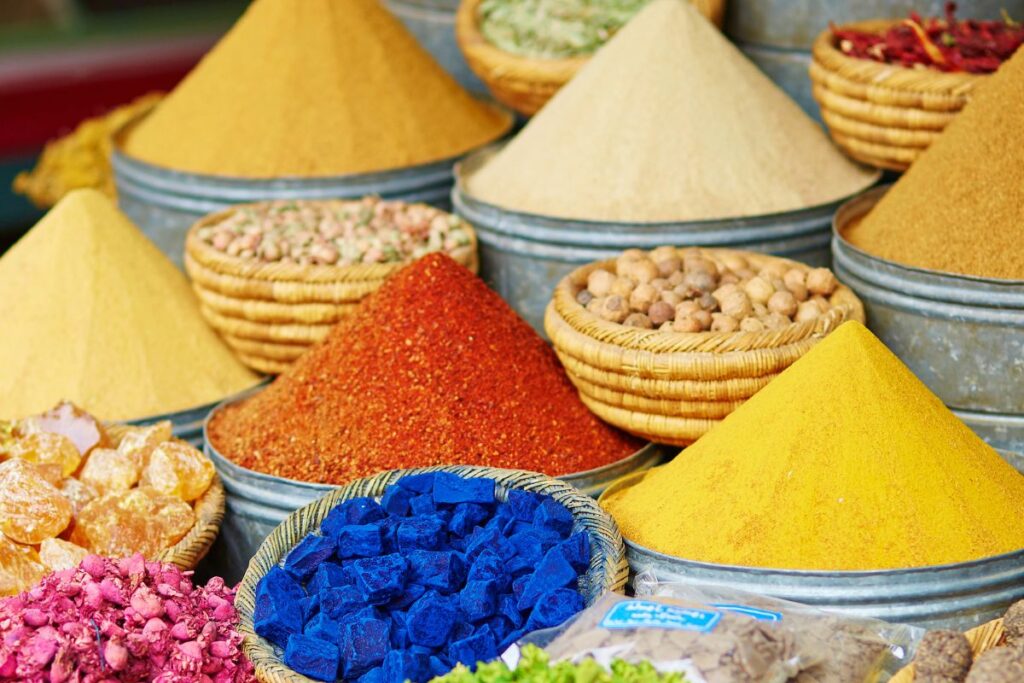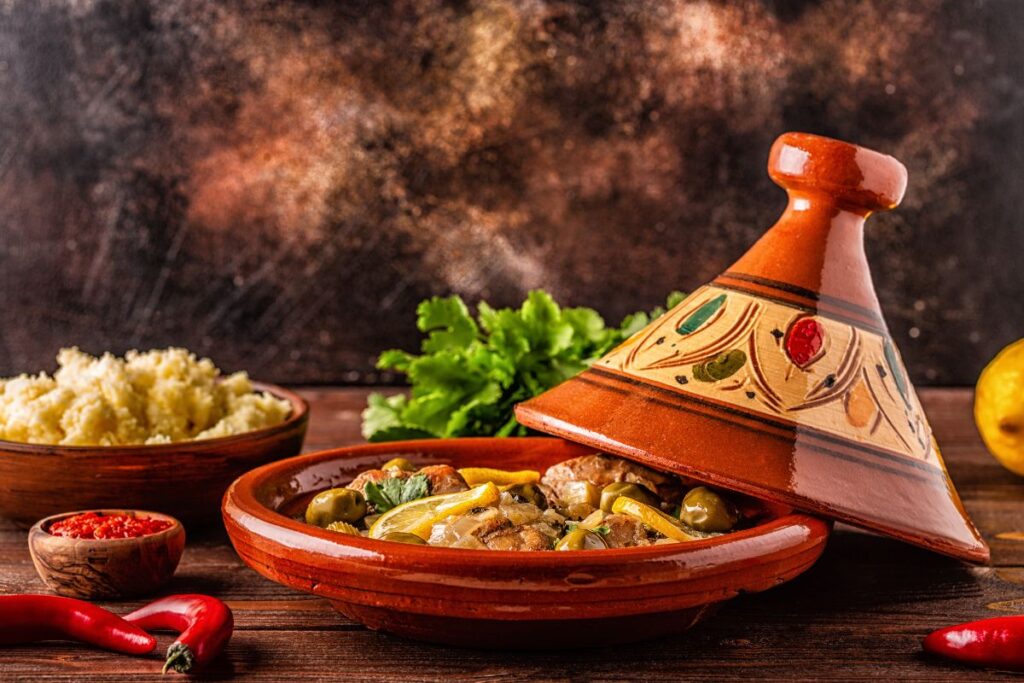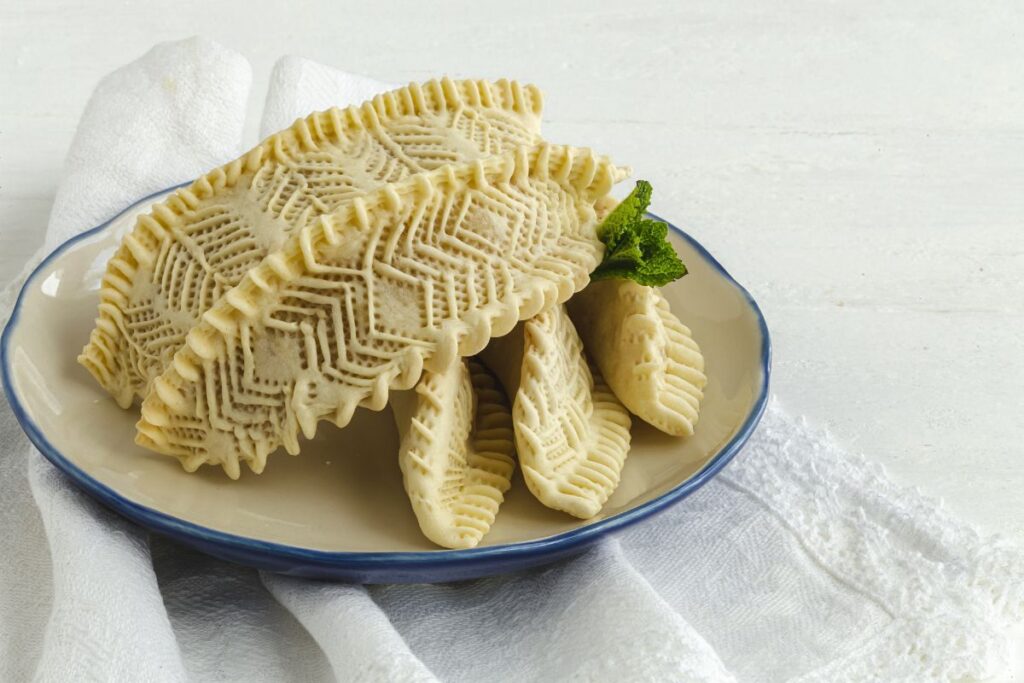
Morocco is a land of vibrant colors, captivating landscapes, and a culinary heritage that’s as diverse as it is delicious. As you journey through this North African gem, you’ll discover that Moroccan cuisine is a reflection of the country’s rich history, blending flavors from Berber, Arab, Andalusian, and Mediterranean traditions. Get ready to embark on a mouthwatering culinary adventure that will tantalize your taste buds and leave you craving more.
Exploring the Flavors of the Moroccan Cuisine
A Feast for the Senses
Moroccan cuisine is a feast for all your senses. The tantalizing aromas wafting through the bustling medinas, the colorful spices stacked high in the souks, and the sizzling sounds of grills in the street food stalls—all come together to create an unforgettable culinary experience.


Flavorful Tagines
One cannot speak of Moroccan cuisine without mentioning tagines. These cone-shaped clay pots are used to slow-cook a variety of dishes, such as lamb with prunes, chicken with preserved lemons, and vegetable tagines bursting with flavors. The slow cooking method allows the ingredients to meld together, creating tender and aromatic dishes that are the heart and soul of Moroccan dining.


The Art of Couscous
Couscous, a staple in Moroccan cuisine, is prepared with care and precision. Hand-rolled grains of semolina wheat are steamed to perfection and then paired with savory stews made from lamb, chicken, or vegetables. Couscous Fridays are a beloved tradition in Moroccan households, bringing families together over a fragrant and hearty meal.


Street Food Delights
For a truly immersive culinary experience, explore the vibrant street food scene. In the medinas, you’ll find food vendors serving up an array of delectable treats. Try a piping hot bowl of harira soup, perfect for warming up on chilly evenings, or savor a pastilla—a flaky pastry filled with pigeon meat, almonds, and spices. Don’t forget to sample a variety of skewered meats and freshly baked bread from the local grills.


The Moroccan Sweet Tooth
Morocco is famous for its sweet treats, and no meal is complete without a serving of mint tea accompanied by pastries. Savor the flavors of almond and honey in traditional desserts like gazelle horns and chebakia. These sweets are often shaped into intricate designs, making them as visually pleasing as they are delicious.


Dining Etiquette
Understanding Moroccan dining etiquette is essential to fully immerse yourself in the culinary culture. When dining with locals, it’s customary to eat with your right hand, as the left is considered unclean. Meals are often communal, with everyone sharing from the same dishes. It’s polite to accept second helpings as a sign of hospitality.


Moroccan cuisine is a culinary adventure that will transport you to a world of flavors, aromas, and traditions. Whether you’re sipping mint tea in a bustling medina, indulging in the delicacies of a street food vendor, or savoring a slow-cooked tagine in a traditional riad, each bite is a glimpse into Morocco’s rich history and culture. So, embark on this flavorful journey, and let your taste buds explore the magic of Moroccan cuisine.
